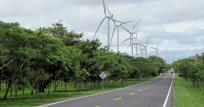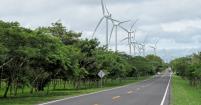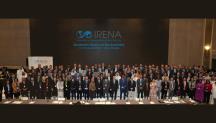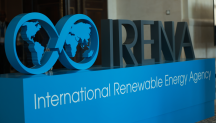

Leaders Advance Plans to Unlock Renewable Energy Potential in Central America
Newsletter
Central America Clean Energy Corridor aims to diversify energy mix, reduce fossil fuel dependency, and combat climate change
San Salvador, El Salvador, 19 February 2015 – An initiative to integrate more renewable energy into the Central America power system took one step forward this week as regional vice-ministers, directors of energy, and directors of climate change met in El Salvador to discuss Central America’s energy future.
With a population of 40 million and a more than three percent annual economic growth rate, Central America’s power needs are rapidly increasing. Regional demand grew 65 percent over the last 12 years and an estimated 7 GW of new electric generation capacity will be needed by 2020.
To meet increasing energy needs with clean, renewable energy, the International Renewable Energy Agency (IRENA) and the Central American Integration System (SICA) are developing the Central America Clean Energy Corridor initiative. The initiative aims to integrate more renewables into the existing Central American Electrical Interconnection System, which stretches from Guatemala to Panama. The recently finished 1,800 kilometre-long transmission line is currently underutilized, presenting a clear opportunity for the deployment of more renewable energy in the region.
“Central America possesses vast resources for hydropower, biomass, geothermal, wind and solar energy. These could be harnessed to help provide clean, cost-effective and sustainable solutions to meet regional energy needs and support in-country development,” said IRENA Director General Adnan Z. Amin. “Accelerating renewables deployment will help the region achieve energy security, develop local economies and create jobs while contributing to efforts to address climate change.”
This week’s workshop, the first jointly organized event since IRENA and SICA signed a Memorandum of Understanding last May, brought together key regional and national stakeholders to discuss next steps. While the potential of the corridor is high, there are still barriers to overcome including the lack of regulation, technical tools and local experience operating a regional power system with medium to high shares of variable renewable energy.
The workshop resulted in feedback that will help move the initiative from concept to reality.
“The corridor concept is not new. Its first implementation is already underway in countries in the Eastern and Southern Africa power pools, promoting cross-border trade of renewable electricity,” said Mr. Amin. “We believe that implementation of the Clean Energy Corridor in Central America can further diversify its energy mix, reduce its dependence on fossil fuels and shape a more sustainable future through harnessing its large renewables resource potential.”
As a precursor to the El Salvador meeting, Latin America energy leaders met in Abu Dhabi in January to discuss the deployment of renewable energy in the region: http://www.irena.org/menu/index.aspx?mnu=Subcat&PriMenuID=30&CatID=79&SubcatID=498




